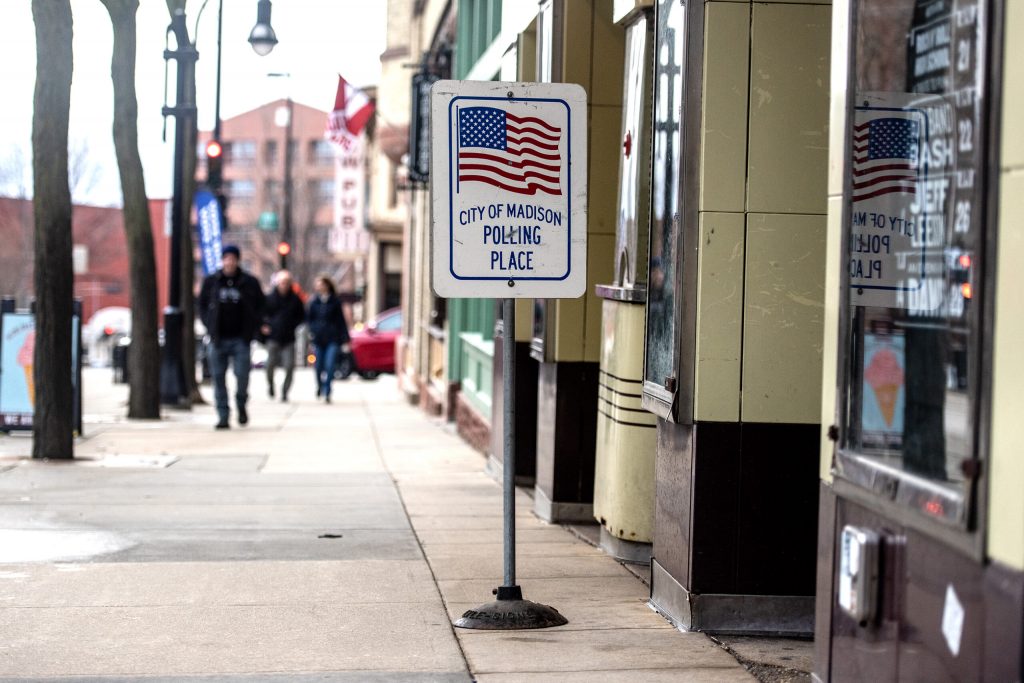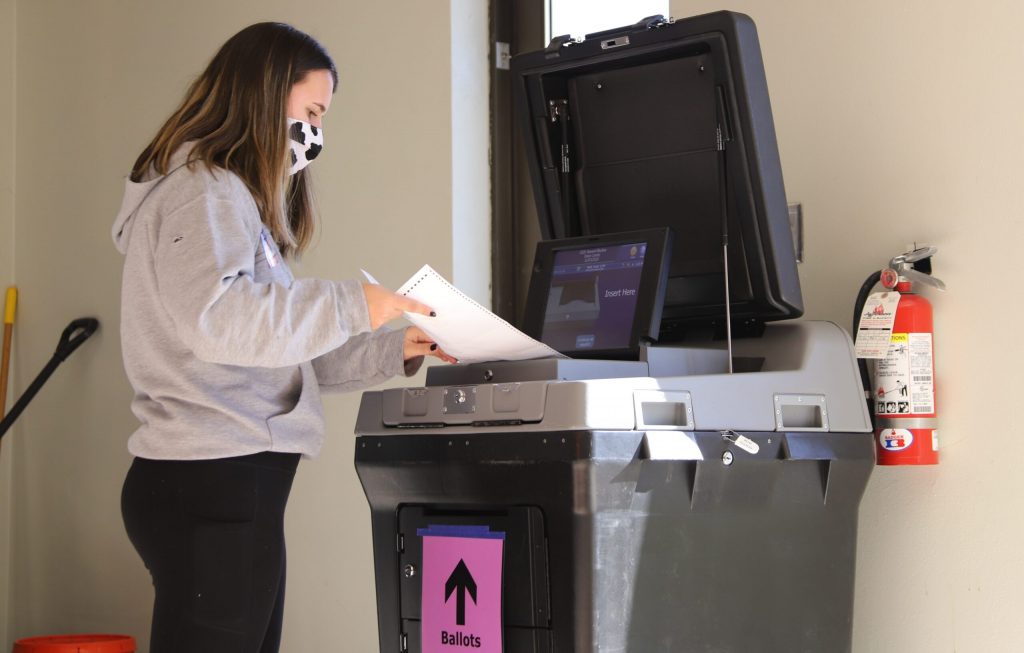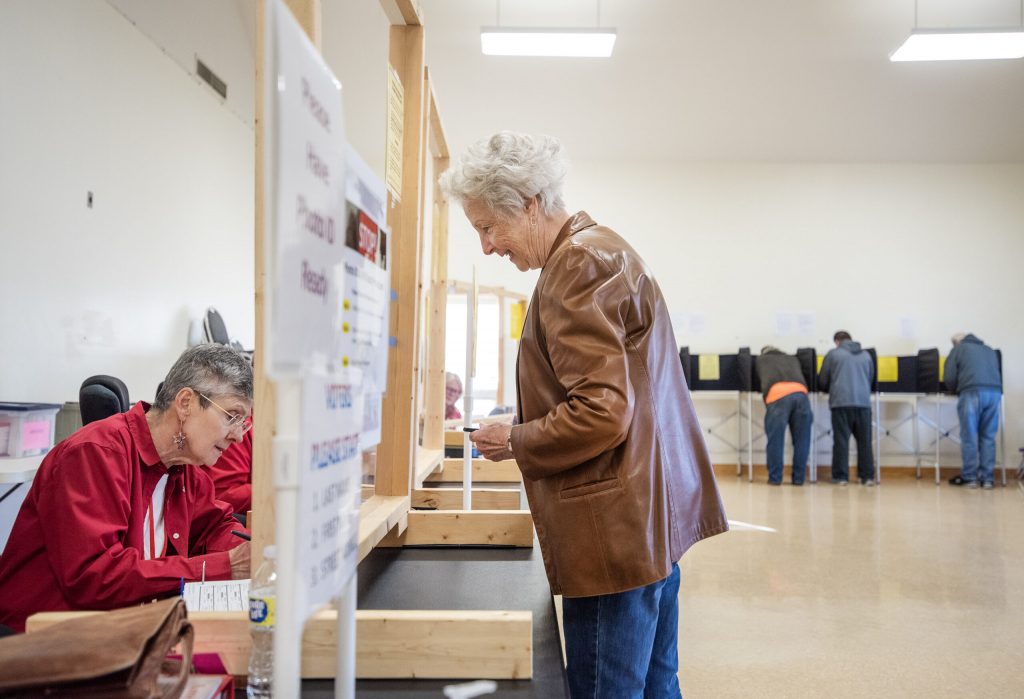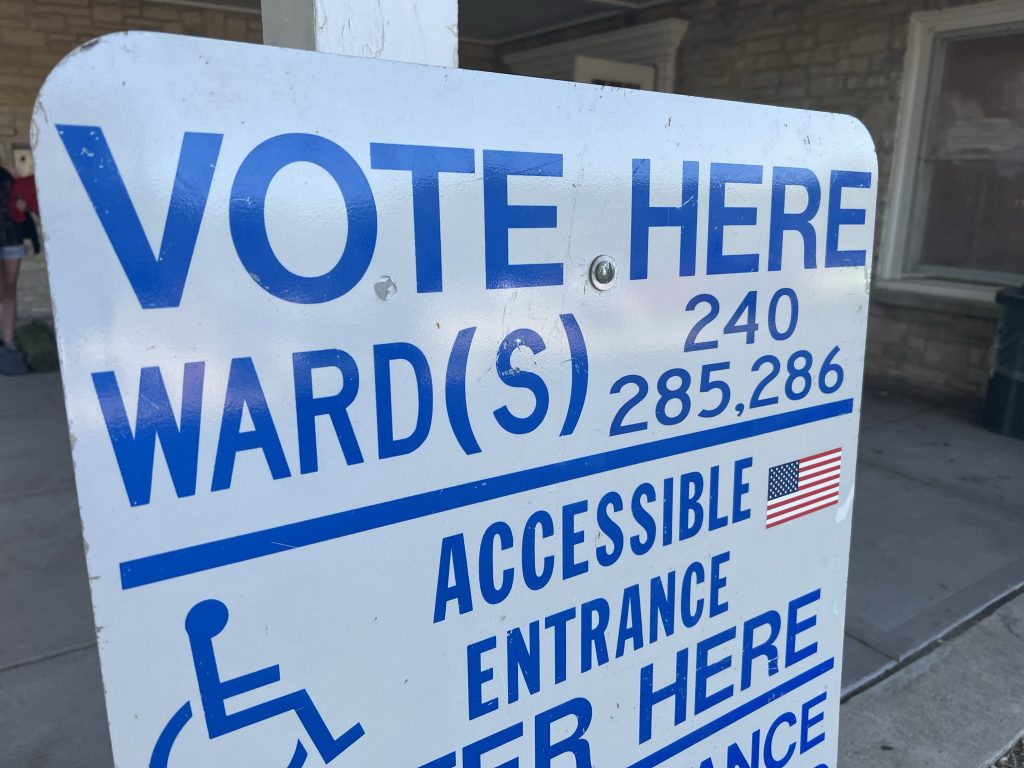How Does Election Security Work in Wisconsin?
Election clerks explain how vote tabulating process works.
As part of the America Amplified project, WPR is among dozens of public radio stations reaching out directly to voters and answering their questions.
Some voters had questions about how elections are run in Wisconsin and what measures are in place to ensure election security.
The following answers are compiled from sources including the Wisconsin Elections Commission, Wisconsin laws and interviews with current and former Wisconsin clerks.
What is the deadline for absentee or mail-in ballots to be received in order to be counted?
Absentee ballots must be received by no later than 8 p.m. on Election Day in order to be counted.
It’s probably too late to mail in your ballot in time for Nov. 5, but you have other options for returning it, including at your local clerk’s office, polling place or absentee ballot count location.
In some communities, drop boxes are also available for returning absentee ballots.
Click here to track the status of your absentee ballot.
How do election officers ensure voter registration lists are up to date so that people who are not authorized to vote are not voting?
Wisconsin clerks use a statewide voter registration database called WisVote. Clerks get information from the Social Security Administration, which allows them to flag voters who may have died and need to have their voter registration deactivated.
Additionally, Wisconsin participates in an interstate compact called the Electronic Registration Information Center, which allows election officials here to compare voter registration to other states.
“That helps ensure accuracy by sharing data on voters who may have moved or registered in other states,” said Sam Liebert, a former Shorewood Hills clerk who now works as Wisconsin’s director for the nonprofit All Voting is Local.
You can click here to check whether you’re registered to vote in Wisconsin. Wisconsin offers same-day voter registration, which means you have until the time polls close at 8 p.m. on Election Day to register to vote.

A sign is positioned outside of a polling location Tuesday, April 4, 2023, at Majestic Theatre in Madison, Wis. Angela Major/WPR
What kind of software/hardware is being used to count ballots? Will they be hand counted as well?
For the most part, ballots in Wisconsin are counted electronically using machines called tabulators. Local election officials in Wisconsin can choose a from a list of equipment that’s approved and tested by the Wisconsin Elections Commission, as well as by the U.S. Elections Assistance Commission.
“Humans make mistakes, and tired humans make mistakes,” said Sun Prairie Clerk Elena Hilby, who directs the Wisconsin Municipal Clerks Association. “Machines are pretty thorough, and machines can be audited, which ours are.”
Following a general election, Wisconsin requires officials to complete an audit that includes a partial hand count. That hand tally is done in randomly selected localities to confirm that the voting machines are tabulating correctly.
“I’ve participated in those audits, and I am just here to tell you that a hand count is far less accurate than a machine count,” former Milwaukee Election Commission Director Claire Woodall said. “Machines don’t get interrupted. They don’t have side conversations. They don’t suddenly skip voter numbers when you are sitting there counting and doing tally marks.”

A poll worker inserts absentee ballots into a voting machine at Lakeview Lutheran Church on Madison’s north side on Nov. 3, 2020. Steven Potter/WPR
What security measures are in place to protect the secrecy of the ballot?
Whether or not you voted is generally public record in Wisconsin, but how you voted is private.
No identifying information, such as your name or signature, is on the ballot itself.
“When you feed your ballot into the tabulator, or when we’re feeding in the absentee ballots, that tabulator is taking a digital picture of each one of them. And then, of course, we still have the paper copy,” Hilby explained. “And then when we close our polls, it randomizes all of the images. … So we can see each ballot, but there is no way to associate it with a specific voter.”
When will the results become official? How long does it take?
Election results won’t be official until they’re certified, a process that can take several weeks.
How do election officials certify the election results? What happens if they don’t certify the election results?
Municipal boards of canvassers meet publicly following the election and they have until Nov. 11 to double check the results, and then certify them.
Those results will be sent to the Wisconsin Elections Commission, which has a Dec. 1 deadline to certify the statewide results.
Voting rights groups including All Voting Is Local say officials have a duty to certify the canvassed results under Wisconsin law.
“It’s not a time to debate laws,” Woodall said of certification. “It’s not a time to question procedures that were in place on election day. The canvass goes through and confirms the accuracy, and then certification is really just kind of an administrative or ministerial action.”
If election officials did refuse to certify Wisconsin’s results, there could face legal consequences including court orders to certify, according to analysis from the Brennan Center for Justice.
But Liebert said he doesn’t expect that to happen.
“Wisconsin has never had an issue with certification, and we’re not planning on starting this year,” he said.

Sondra Abraham smiles as she checks in at a polling location Tuesday, Nov. 8, 2022, at the New Glarus Village Hall in New Glarus, Wis. Angela Major/WPR
How do election officials ensure that an absentee or mail ballot has come from a legitimate voter and not been tampered with?
Absentee ballot envelopes in Wisconsin have a unique barcode to ensure that someone can’t vote twice. Once that code is scanned, officials mark the voter in a poll book as having voted.
Absentee ballot envelopes must be signed by the voter. They also need to be signed by an adult witness who fills out their address on the absentee ballot envelope.
“If it looks like it’s been tampered with, we can’t count it,” Hilby said.
She said ballots that look like they’ve been tampered with are set aside, so that officials can later determine whether they should be rejected or not.
Sometimes, Hilby said ballots look like they’ve gotten crumpled up after going through a mail machine.
“What we’ll usually do is contact our voter and say, ‘Hey, your your ballot came back a bit mangled,’” Hilby said.
She said sometimes election officials have time to contact the voter with the damaged ballot and ask them to submit a different ballot by the deadline.
Answering FAQs about Wisconsin election security was originally published by Wisconsin Public Radio.
If you think stories like this are important, become a member of Urban Milwaukee and help support real, independent journalism. Plus you get some cool added benefits.




















